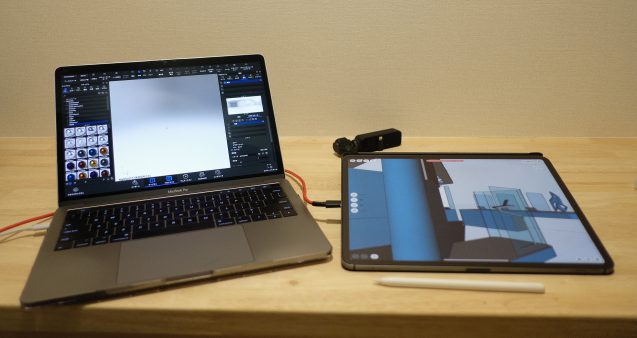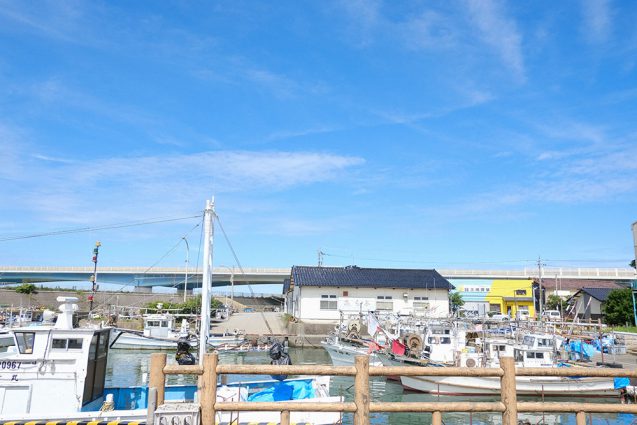コロナ渦で働き方や行動様式が一変し、オフィスの存在そのものが見直されようとしています。ある大手メーカーでは、社員の大半をテレワークに切り替え、オフィスの賃料コストと通勤コストを軽減し、その余剰コストを社員のテレワーク助成(自宅の電光熱費など)といった形に振り分けているそうです。その反対に大手IT企業は、テレワークからシフトワークに切り替え、テレワークを推奨しながらもオフィスを維持し、将来的な増員分で発生するオフィス面積増加分をテレワークの併用によって現状面積で維持する方針を打ち出しています。感染を予防する観点で言えばどちらも大胆なシフトチェンジです。
その一方で、中小企業のテレワークは導入が中々進まず、その殆どは「仕組みが作れていない」「仕事の特性上テレワークができない」など、その会社のシステム上の理由で導入が進んでいないと言います。仕事の特性上テレワークが導入できないのは致し方ないとしても、仕組みが作れていない為に導入できないのは、日本的な働き方の弊害なのかもしれません。
コロナ渦で顕在化した、日本人の働き方
Designcafeも、首都圏で発令された緊急事態宣言(4/8)の10日前に当たる3/28から5/25まではテレワークを実施し、以降8/31まではシフトワーク(週3日出勤の交代制)で業務を行っていました。コロナ渦前からテレワークのスタッフが在職していたこともあり、コミュニケーションインフラやデーター共有用のストレージなどを使っていたことも幸いし、また空間デザインという仕事の特性もあり、業務的には比較的移行しやすかったかもしれません。
小さなデザイン事務所である私たちの場合、コロナという目に見えない「ウイルス」の危険性を排除していかないと、一人でも社内で罹患者を出してしまった場合、会社を一時的に閉鎖しないといけなくなります。その時に発生する世評や一時的でも公に業務を止めるリスクは中小企業でははかり知れなく、最悪の場合、キャッシュの有無にかかわらず倒産に追い込まれてしまいます。その為、会社から徒歩圏内に住まいがあり、通勤感染リスクの低い僕とバックオフィスマネージャー(総務)の二人を除いてテレワークとシフトワークを実施しました。海外ですと、規模の大小に関わらず、シフトワークやテレワークがある程度浸透しているケースが多く(実施の正否はともかく)ロックダウンなどの処置に移りやすかったのかもしれません。
良い面としては、リモート会議が浸透し、新規の問い合わせなどでもこれまでは先方へ出向いてお話を伺うスタイルだったのが、初顔合わせからリモートという形にシフトし、移動の時間的な制約から解放されたことです。遠隔地でも気軽に問い合わせをいただいたり、打合せも極力リモート会議を行うなど、風潮的に市民権を得た感じがあります。この利便性は、アフターコロナでも継続していくでしょう。
課題としては、新卒者のリアルな研修(得意先への同行や施工現場研修など)が一切行えない為、リモートでの研修が中心となり、モチベーションの維持が難しかったことです。今年入社の新卒者の方達はこの経験からから「リモートネイティブ」なる言葉も出てきていますが、積極的な研修が行えないのはマイナスの部分が大きく、様々な経験をして得られないストレスがあります。また、個々の評価をする場合、目に見える成果に目が向きがちで潜在的な成果を評価しづらい、属人的になりがちで横の連携がスムーズに行かないなど、課題も残りました。従来の働き方が全てマイナスだとは思えませんが、従前の様に全て戻る事は難しいと思われ、働き方も含めて、新しい行動形態に即した成果や評価の仕組み、マインドの仕組みを可視化していく必要性があります。
ABW( Activity Based Working )( 働く場所は活動から選ぶ )という選択
そんな中で、働き方の行動形態から分析し、オフィスや働く場所のあり方として近年注目されているのが、ABW( Activity Based Working )と呼ばれる、オランダで誕生したワークフォーマットです。時間や場所に制約されずに働けるABWには下記の様な特徴があります。
従来のように階層や組織、チームといったフレームに基づき作られたワークプレイスで働くのではなく、個々のワーカーのアクティビティ(活動)にふさわしい場を用意し、活動に応じてワーカー自らが自立的にワークプレイスを使い分けるワークフォーマット。ヴェルデホーエンの知見に基づき、10の活動に分類している。
ITOKI TOKYO XORKより引用
具体的には、固定された個人のスペースは設けず、物理的に専門的な作業や一人で集中して作業ができるスペースやスタンディングデスク、ソファなど様々なワークスペースが用意されている事。また、オフィス内という場所に限定せずに、自宅やカフェでのリモートワークやテレワークも認めるなど、個人が自分の最大パフォーマンスを発揮できる環境を選ぶことができます。一人での仕事(集中&専門的な作業)、コワーク(他のメンバーが同居している場所で行う一人仕事やウェブMTGや電話)、二人でのMTGやコワークや対話、3人以上のMTGやアイデアだし、知識共有、情報整理、そして息抜きのためのリフレッシュまで、仕事を行う上での行動形態に即した形でワークプレイスを計画、構築していきます。
個人的に2拠点での暮らしを実践していく中で感じているのは、MacやWiFiなどがベースにあり、必要なインフラ(WebMTGやセキュアなクラウドストレージ)があれば比較的簡単に導入できる事です。デザインの場合、大きなモニターがある事で作業効率が飛躍的に上がりますが、自宅にモニターを常備すれば集中してデザインワークに取り掛かれます。またアイデアやコンセプトワークの様な漠然としたイメージを集約させたい場合は、スタジオや自宅ではなく、例えば街のカフェや地方のB&Bの様な所で籠もって仕事をすることも選べます。
ABWを導入する上での課題
会社やスタジオ単位でABWを実践していくには、まず成果の設定と評価の機軸がしっかりしていないと難しく再設計が必要な事です。また、労働基準法や労災との整合性など日本ならではのハードル、情報漏洩などのセキュアの仕組みなどが必要で、一つ一つクリアにしていく必要があります。これは、会社としての目的や目標から掘り下げながら、一人ひとりが有意義に参加している実感が備わっている必要があり、その中で安心して働けるという基本的な部分を兼ね備えていないといけません。
オフィスという空間でのメリットは、個席を用意しない形になるためオフィス面積の軽減が可能になり、その分多様な働く形態に即したファシリティを用意することになります。オフィス面積の軽減は家賃の低減に繋がり、テレワークの併用は通勤手当の低減にも繋がります。職場の仲間たちがチームとして時間を共にする必要性は、今後も仕事における極めて重要な要素であることに変わりありません。しかし、オフィスへの依存度が低減するチームもあれば、定期的な在宅勤務の継続を希望する従業員も出てくるでしょう。
また、ABWありきで進めるのではなく、自社のマインドや働き方にマッチしているかどうかを見極めることも重要です。例えば個席での在籍率が高い(集中した作業が中心)であれば、従来のワークプレイスの方が都合がよいケースも想定できます。プログラマーや共同作業の多い建築設計などは、ハードウェアのスペックの高いシステムとチームでの共有作業が多い、もしくは持ち出すことが難しいなどの制約があるため見極めが必要です。
ABWの前に段階的な検討を
日本の働く環境は、テレワークも然りですが商慣習に左右されている部分も大きく、部門や部署によっては導入できても書類や捺印などの業務の伴う部署は、結局社内で仕事をしないといけないなど、業務によって差別が生まれてしまう可能性もあります。その為、段階的な実施もしくは、社内のマインドの醸成などが不可欠だと言えます。
Designcafeでも、スタッフの拡充は今後継続する予定があり、将来的にはABWの様な仕組みで(段階的であっても)働ける様にしていきたいと考えています。その前には、解決すべき事象が色々ありますが、今回のコロナ渦で顕在化した「人が密接に関わっていなくても適度な距離感で仕事ができる」ABWの別な側面にも着目しており、今後も勉強しながら検討していきたいと考えています。
Covid-19 and the concept of ABW = Activity Based Working
Covid-19 is changing the way we work and behave, and the very existence of the office is being rethought. One major manufacturer is switching the majority of its employees to telework, reducing the cost of office rent and commuting, and allocating the extra costs to subsidize employee telework (e.g., home utilities). On the other hand, a major IT company is switching from telework to shift work, encouraging telework while maintaining office space, and maintaining future increases in office space at the current level by combining telework with future increases in personnel. Both are bold shifts in terms of preventing infection.
On the other hand, the introduction of telework in small and medium-sized companies has been slow, with most of them stating that they have not been able to introduce telework because of their own systemic reasons, such as the fact that they have not been able to create a system or that the characteristics of their work do not allow for telework. It may be that the introduction of telework is not possible because of the characteristics of the work, but it may be a bad effect of the Japanese way of working that it is not possible to introduce telework because the system is not created.
The Japanese way of working that became apparent at Covid-19.
Designcafe-Inc. also teleworked from 3/28 to 5/25, 10 days before the state of emergency was declared in the Tokyo metropolitan area (4/8), and from then until 8/31, we worked in shifts (three days a week in shifts). We were fortunate in that some of our teleworkers had been working at Corona Uzum, and we all had access to storage for communication and data sharing, and the nature of the spatial design work made the transition relatively easy.
As a small design firm, if we didn’t eliminate the danger of an invisible “virus” called corona, we would have to temporarily close the company if even one person in the company became ill. The risk of publicity and the risk of publicly shutting down operations, even temporarily, is immense for a small business, and in the worst case scenario, the company will be forced into bankruptcy with or without cash. That’s why we implemented telework and shift work, except for two people who live within walking distance of the company and have a low risk of commuting infection: me and the back office manager (general affairs). In many cases overseas, regardless of the size of the company, shift work and telework is somewhat more prevalent (regardless of whether it’s right or wrong to implement), so it may have been easier to move on to lockdown and other measures.
On the positive side, remote conferencing has become widespread, and the style of new inquiries has shifted from visiting the office to remote meetings, freeing the company from the time constraints of travel. We feel that we have gained citizenship by making it easy for people to contact us even in remote areas and holding meetings remotely as much as possible. This convenience is likely to continue at After Corona.
One challenge is that, because we are unable to provide any real training for new graduates (such as accompanying them to clients and training at construction sites), we mainly conduct training remotely, and it has been difficult to maintain motivation. The new graduates who joined us this year have become “remote natives” as a result of this experience, but the inability to conduct proactive training is a big minus, and there is a lot of stress that cannot be gained from a variety of experiences. In addition, when evaluating individual employees, there are some issues that remain, such as the tendency to focus on visible results, which makes it difficult to evaluate potential results, and the tendency for employees to become subjective, which makes it difficult for horizontal cooperation to go smoothly. I don’t think all the conventional ways of working are negative, but it would be difficult to go back to everything as before, and I felt that it would be difficult to do so without visualizing a system of results, evaluation and mindset that is in line with the new behavioral structure, including the way of working.
We are at a moment in history where we are in the midst of a change in history that has the potential to transform the conventions of how we work, how we communicate with others, and how we deal with technology. Over the past few months, remote working has become widely popular as companies are faced with the need to have employees work in a virtual environment. However, the current state of remote working, where many employees are forced to balance family and work from home, is far from ideal.
Activity Based Working (ABW) is the choice to choose where to work from.
In recent years, ABW (Activity Based Working), a work format born in the Netherlands, has been attracting attention as an ideal office and place to work based on an analysis of the way people work. ABW has the following characteristics that allow people to work without being restricted by time or place.
Rather than working in a workplace based on a hierarchy, organization or team, as has been the case in the past, ABW provides a workplace that is appropriate for each worker’s activities and allows them to use the workplace independently according to their own activities. Based on the findings of Verdehoen, it is categorized into 10 activities.
Adapted from ITOKI TOKYO XORK
Specifically, there is no fixed personal space, but rather a variety of workspaces, such as a physical space for professional work or a single person to focus on, a standing desk, or a sofa. Individuals can choose to work in an environment that allows them to perform at their maximum performance, not limited to the in-office location, but also allows them to work remotely or telework at home or in a café. You can work alone (focused & professional work), co-work (solo work, web MTG or phone calls where other members live with you), two-person MTG, co-work or dialogue, three-person or more MTG, idea generation, knowledge sharing, information organization, and even refreshment for a break. We plan and build our workplace in a way that fits with the way we do our work.

I didn’t come back to Tokyo right away from my business trip to Kanazawa before the Bon festival, but I was holed up in a B&B in Mikawa.

The harbor not far from the B&B in Mikawa. I used to take a walk there often to refresh myself in between work.
In my own practice of living in two locations, I have found that if you have a Mac or WiFi as a base, and the necessary systems (web MTG and secure cloud storage), it’s relatively easy to implement. In the case of design, having a large monitor increases work efficiency dramatically, but if you always have a monitor at home, you can concentrate on your design work. Also, if you want to consolidate vague images such as ideas or concept work, you can choose to work in a café in the city or a B&B in the countryside, for example, instead of working in a studio or at home.
Challenges in implementing ABW.
n order to implement ABW in a company or studio unit, it is difficult to do so without a solid foundation for setting and evaluating results, and it is necessary to clear the hurdles unique to Japan, such as consistency with the Labor Standards Law and workers’ compensation, as well as a secure system for information leaks. This must be done with a sense of meaningful participation by each individual while delving into the company’s goals and objectives, and it must be a basic part of the company’s work environment that allows employees to work with peace of mind.
The advantage of an office space is that it does not provide individual seats, which reduces the size of the office space and allows us to provide facilities that suit a variety of working styles. Less office space leads to lower rent, and combined telework leads to lower commuter benefits. The need for colleagues in the workplace to spend time together as a team will continue to be an extremely important part of their work. However, while some teams will become less dependent on the office, some employees will want to continue to work from home on a regular basis.
It’s also important to determine if it’s a good fit with your company’s mindset and way of working, rather than proceeding with ABWs. For example, if you have a high rate of individual seat enrollment (mainly focused work), you can assume that there are cases where a traditional workplace is more convenient for you. Programmers and architectural design, for example, which tend to work collaboratively, have higher hardware specs and systems that are often shared by teams, or are difficult to take out.
We’re going to have to do a step-by-step review before ABW.
The working environment in Japan, as with telework, is heavily influenced by business practices, and even though some departments and divisions can introduce telework, those that require paperwork and stamping will end up having to work in-house, which may lead to discrimination depending on the job. Designcafe-inc. plans to continue to expand its staff, and in the future, we would like to be able to work in a system like ABW (even if it is in stages). Before that, there are many things that need to be resolved, but we are also focusing on another aspect of ABW that became apparent during the Corona Vortex, which allows people to work at a moderate distance without being closely related to each other, and we will continue to study it as we go forward.